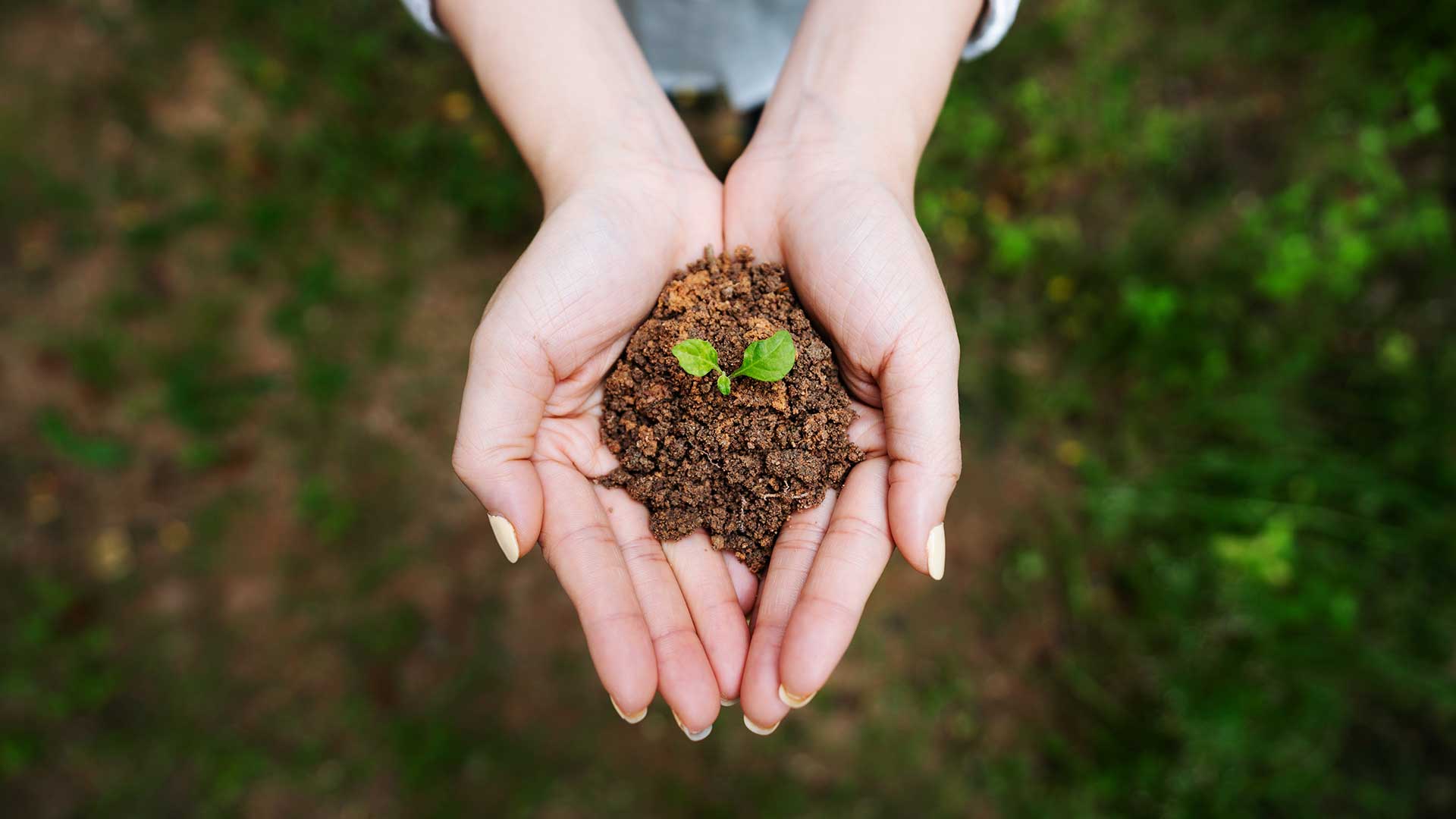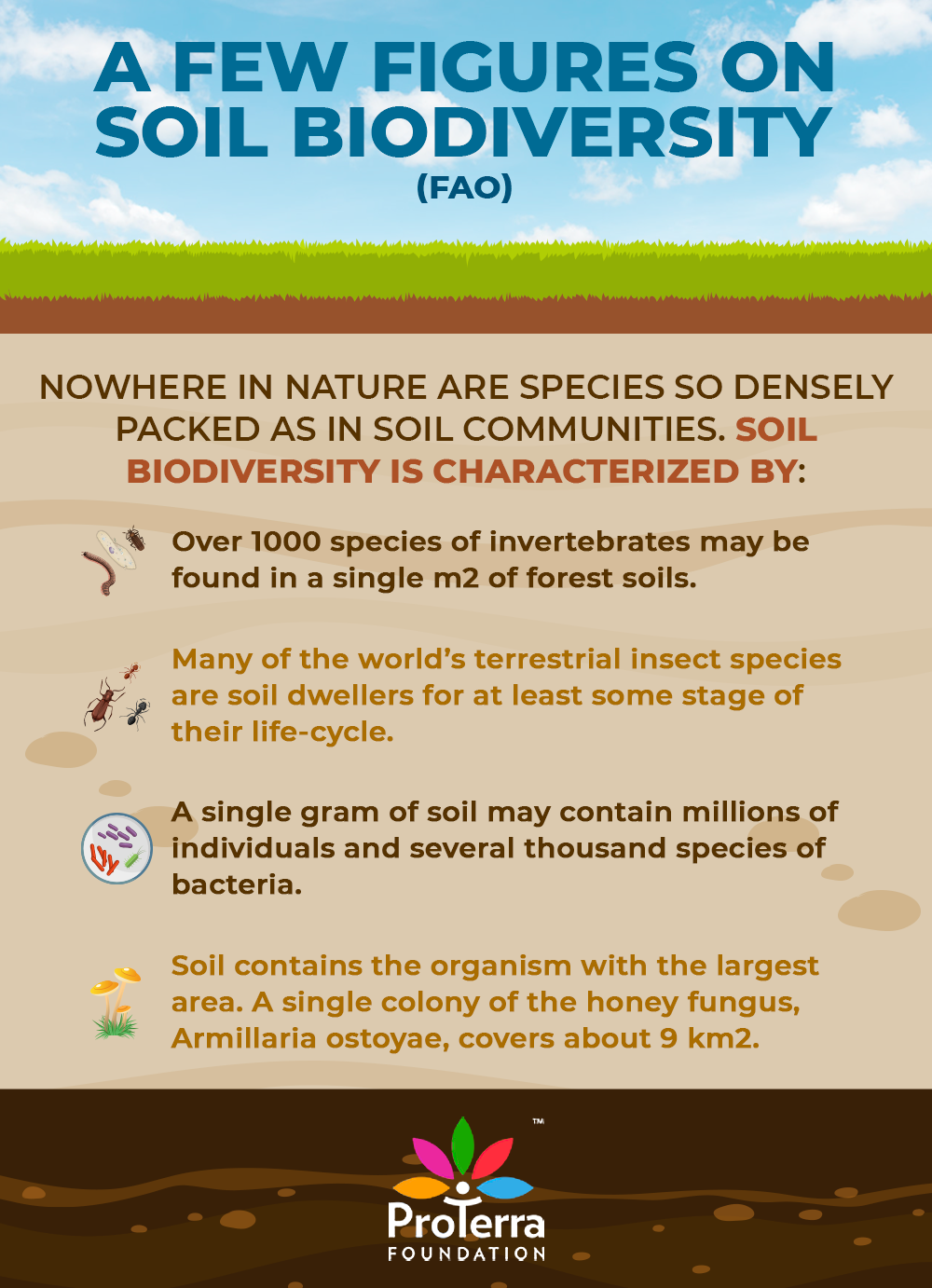Soil conservation

Soil is often the most neglected natural resource in the world. However, it is an essential element for life as it literally sustains it. A healthy soil is a key element for growing healthy crops; healthy plants rely less on pesticides to overcome pests, are more resistant and will be more nutritious. The soil is a living system with a wide variety of species of organisms (check out a few facts on soy biodiversity developed by FAO).

On the FAO Soils portal is highlighted that “about 99% of the world’s food supply comes ultimately from land-based production with about 50-70% of the land devoted to agriculture. As the population is estimated to reach 9-10.5 billion by 2050 we cannot ignore the health of the ‘soil organism’ if we want to be able to provide food and feed for increasing consumption and sustain our soil resources. Modern agricultural methods such as plowing, fertilizer application and pesticides have often replaced biological soil functions and increased the reliance on external inputs to maintain productivity, which in the long run is unsustainable”. Therefore, it is clear that agricultural activities have an important impact on the soil biota and its diversity and that conventional agricultural methods may not be sustainable overtime.
Symptoms of soil degradation are numerous and include decline of soil fertility, development of acidity, salinization, alkalization, deterioration of soil structure, accelerated erosion, loss of organic matter and biodiversity. Efforts to restore productivity of a degraded soil must be coupled with other measures that affect the land use practices, in particular conservation agriculture, good agricultural practices and irrigation management and integrated plant nutrient management[1].
As indicated by Global Agricultural Organization, errors in agricultural and soil management practices often become visible when it is too late to avoid the consequences. As previously indicated, several conventional agricultural methods are no longer adequate to meet the demand for fertile soil. This includes slash-and-burn agriculture, which is used to convert forest areas into arable land. Some of the world’s most vulnerable farmlands are tropical areas, where most of the organic matter is found on and above the surface, overlying a very thin topsoil layer, as well as the oldest soils in the world in the subtropical dry plains of Africa[2].
ProTerra Foundation envisages a world all businesses contribute to the protection of biodiversity by switching to sustainable production. In this regards ProTerra Standard has defined a set of requirements related to the adoption of good agricultural practices that aim at conserving soil quality. These include requirements to avoid erosion, crop burning, control irrigation (minimizing salinization), and to decrease the use of chemical products (pesticides and chemical fertilizers). Additionally, a set of requirements exist in order to reduce the direct impact of agricultural activity to soil such as stimulus to use crop succession and rotation, organic agriculture, tillage and mulching. ProTerra Foundation believes that global agriculture must implement sustainable practices urgently in order to conserve soil quality and quantity. Building up, maintaining, and conserving the fertility of different soil types around the world is one of the biggest challenges today.